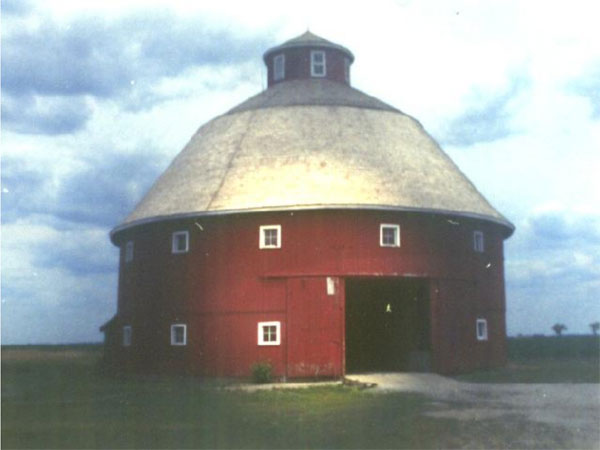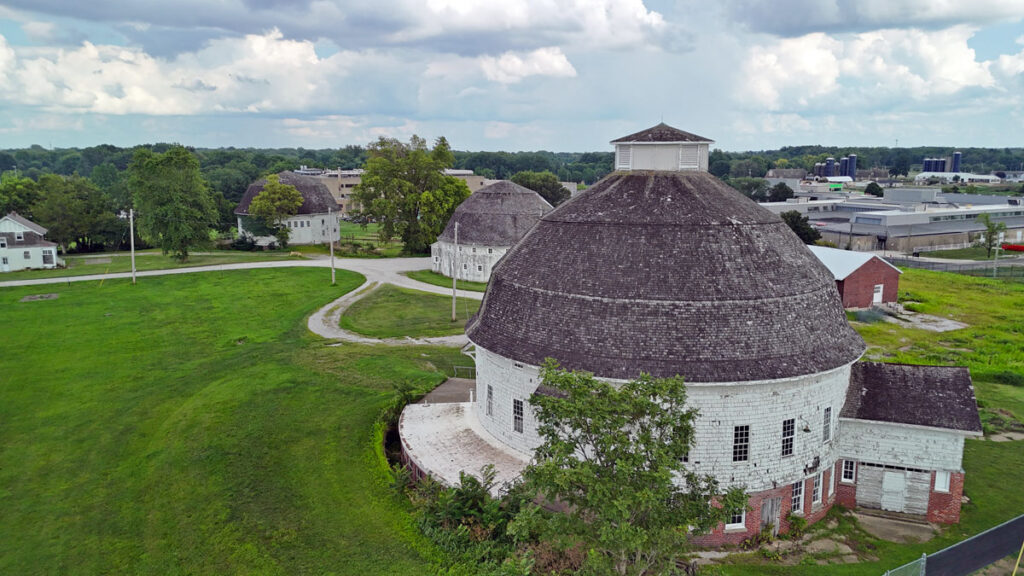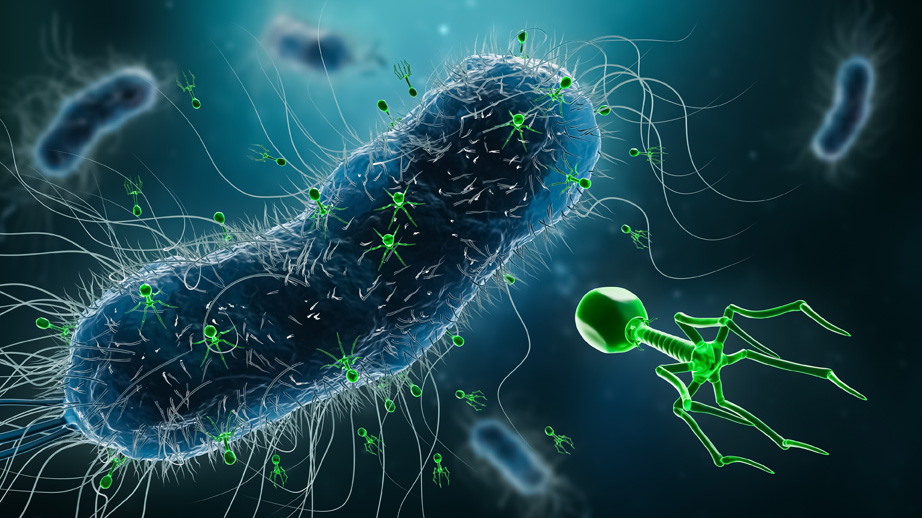By all accounts, Leah Jane Wightman was a loyal friend and daughter, a dedicated professional, and a very private person. When she passed away on November 18, 2024, at the age of 84, she demonstrated her deep connection to her upbringing on an Illinois farm. She left an estate valued at $10 million to name and sustain the three historic round barns at the University of Illinois Urbana-Champaign.
“We are honored by Ms. Wightman’s generosity and foresight,” said Dr. Peter Constable, dean of the University of Illinois College of Veterinary Medicine. “The round barns stand as monuments to the state’s agricultural foundation and the university’s many contributions to that industry. Her gift will allow us to preserve these structures and restore them so they continue to provide beauty and utility.”

The veterinary college has occupied land adjacent to the barns since the 1970s. In 2023, the campus assigned oversight of the easternmost barn, which is nearest the Veterinary Teaching Hospital, and its adjacent farmhouse to the College of Veterinary Medicine. Recently, the college took on management of the other two barns as well.
“Leah grew up on a farm near Arcola, Illinois,” shared Christine Dietrich, associate dean for advancement at the College of Veterinary Medicine. “There was a round barn not far from the house she lived in. Her friends and relatives have told us that these barns held a special place in her heart.”
Wightman in Douglas County
Leah Wightman was born in 1940 to James and Fern Wightman. Her father was a tenant farmer, and her mother operated a beauty parlor from their home. Don Overton, a close friend of Wightman, recalls that the farm was operated with three teams of horses and two or three hired hands.
Of course, like all children of farm families, Leah and her brother Jim worked on the farm. They were also among the last generation in rural Illinois to attend primary grades in a one-room schoolhouse.

Janet Stumeier, one of Leah’s cousins, recalls “fishing” with Leah at a creek near the Wightman home.

“We attached strings to long sticks and baited the string by tying on pieces of hot dog,” said Stumeier. “We caught crawdads that way.”
Down the road from the Wightman house was a round barn built in 1911, around the same time as the University of Illinois round barns. Indeed, the university’s structures were intended to showcase the benefits of round barns for dairy operations and encourage their construction, as documented in a 1910 treatise on the subject produced by the university’s Agricultural Experiment Station.
Leah Wightman graduated from Arcola High School, one of 31 members of the class of 1958. She enrolled at the University of Illinois but paused her studies after three years. She eventually completed a bachelor’s degree in 1977.
The Move to Champaign
Around 1963, Wightman took a job at the University of Illinois bookstore. A mutual friend introduced her to Barbara Clark (nee Coon), a woman from Oakland, Illinois, in Coles County, just 15 miles east of Arcola, who was also moving to Champaign. The two women became roommates and lifelong friends.
“We shared an apartment near the intersection of John Street and Mattis Avenue for three or four years,” said Clark. “At that time, it was the western edge of Champaign.”
While the two women worked hard at their jobs, they also truly enjoyed their free time.
“One time we took a train to Aspen, Colorado, for a ski trip and had more fun than you can think of!” recalled Clark.
Upon returning to Chicago’s Union Station after this trip, the women found themselves in the midst of a terrible snowstorm. All transportation out of Chicago had shut down. Somehow, they were able to hitch a ride on a bus that was taking a group of airmen to the Chanute Air Force Base in Rantoul.
“We got on the bus and sat right behind the driver,” said Clark.
The driver apparently took a shine to the women, because after dropping off the airmen he agreed to drive Barbara and Leah all the way to Champaign.
Trio of Friends from Douglas/Coles/Edgar Counties
About a year after Wightman and Clark became roommates, they met another person from the area where they were raised. Don Overton was raised in Hume, Illinois, a small town in Edgar County less than 25 miles from Arcola.
Overton had earned a degree in accounting from Eastern Illinois University in 1963. After working at a Chicago area business for one year, he decided to return to central Illinois, taking a position as a teacher in the “annex” to Champaign’s Central High School. He also entered a master’s degree program in accounting at the University of Illinois, which he completed in 1968.
In 1967 the Central High annex transitioned to a newly built facility called Centennial High School. Overton soon became the chair of the school’s business education department and eventually held an administrative position within the Unit 4 school district.
Overton maintained a close friendship with Wightman throughout her life.
National Leader in Her Field

Life changed for both women after their few years together. Barbara got married, and Leah was hired to create and manage the bookstore for the brand-new Parkland Community College, which was established by voter referendum in the spring of 1966 and first offered classes in the fall of 1967.
“She was the third person hired for the new college,” said Clark. “Before the current campus was built, classes were held in downtown Champaign. The bookstore was housed in the basement of the Gregory School,” a former elementary school on Columbia Avenue near Randolph Street.
Wightman became very active in the National Association of College Stores, a professional trade association for the collegiate retailing industry. She traveled frequently to attend trade shows and held elected office in the organization at the national level.
Jon Surma, former vice president of administrative services at Parkland College, supervised Wightman. “Leah dedicated her working life to Parkland as the bookstore manager,” he recalled.
Wightman’s Hobbies and Interests
Outside of work, Wightman enjoyed traveling and collecting, often frequenting estate and garage sales. She visited her family members in the Arcola and Shelbyville areas nearly every weekend.
According to Clark, Wightman collected paintings, jewelry, and Abraham Lincoln memorabilia, among other things.
“Leah liked barns and talked a lot about them. She even owned a painting of two barns by Joyce Parkhill, a well-known local artist,” said Clark. “
“Leah lived a very frugal life but loved going to estate sales. She acquired a lot of jewelry that way. When we were both retired, we used to meet every Saturday morning at Art Mart for coffee and Leah would show off her latest pair of earrings that related to the season, like Halloween.”
After the death of Wightman’s father in 1977, her mother continued living in the farmhouse. Clark recalled that Wightman and Overton drove to the farm every weekend to help Leah’s mother and continued to visit weekly after her mother moved to a nursing home. They also took Leah’s mother to see her sister who lived in Shelbyville, after whom Leah was named.
Wightman’s mother died in 2009. Her brother, who lived in Florida, also preceded Wightman in death.
Estate Gift for University of Illinois Round Barns
A few years before her death, Wightman contacted the University of Illinois Foundation to discuss her interest in leaving her estate to support the university’s round barns. She also shared her intentions with both Clark and Overton.
Her conservative lifestyle along with owning rental properties and investing wisely had led to a very sizeable estate.
The university’s “Illinois Experimental Dairy Farm Historic District,” with its iconic trio of round barns, earned a place on the National Register of Historic Places in 1994. At that time, the barns were actively being used.
The first of the barns, known as the Twenty Acre Dairy Barn, was completed in 1908. The College of Veterinary Medicine has requested bids to restore the exterior of this barn and its adjacent farmhouse.
The two other barns, called the Dairy Horse Barn and the Dairy Experiment Barn, were completed in 1910 and 1912, respectively, each sited to the west of the others. The college is planning to move its farrier practice into the middle barn.
Today, all three barns need structural repairs and updates to allow them to remain a campus landmark. The generous gift from Leah Wightman ensures that they will continue to serve the university and College of Veterinary Medicine while representing and preserving the rich history of Illinois agriculture for future generations.

The Round Barns Today
In the image above, looking from the northwest, the Dairy Experiment Barn is in the foreground, with the Dairy Horse Barn, Twenty Acre Dairy Barn, and farmhouse from right to left behind it. The University of Illinois College of Veterinary Medicine’s three-story Basic Sciences Building is visible between the Twenty Acre Dairy Barn and the Dairy Horse Barn. To the right of the Dairy Experiment Barn, the college’s Large Animal Clinic can be seen, with its concrete exterior and gray roof. The blue silos on the dairy farm operated by the University of Illinois College of Agricultural, Consumer and Environmental Sciences lie further to the south.
The present-day aerial photos of the University of Illinois Round Barns were taken by Justin Penrod.
Our thanks to Janet Stumeier for providing the photos related to Leah Wightman.




